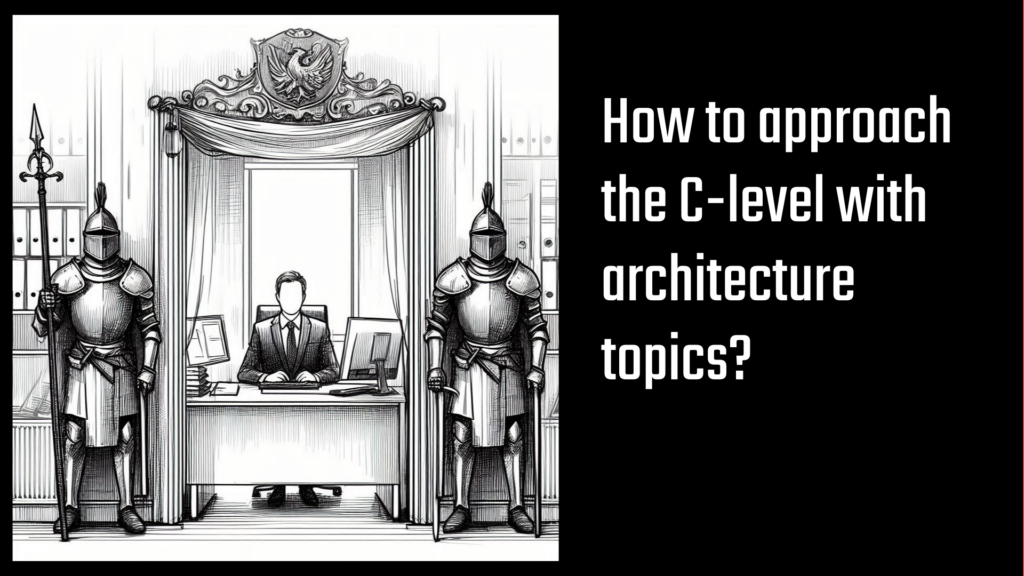Whenever I tell people about all the benefits of engaging the C-level on architecture the next question is always how to engage them. CXOs tend to be very busy with a calendar that looks like someone lost Tetris in a late level. Getting their attention and time is difficult. Let’s explore some options that worked very well for me in the past.
We will break this topic into two parts. In this post I will explore how to get access and how to get into the calendar and in the follow-up post how to best create engagement and an ongoing dialogue.
Overall setup
First of all today it is much easier to get attention on the overall topic of Architecture than it was 10 or 15 years before:
- The scale of IT investments is increasing to a point where it is not unusual to spend 500 million USD on a core system replacement. When these projects get in trouble and double their cost it will impact the P&L of the company and quite often also the careers of people outside of IT.
- Cyber incidents are not only damaging the brand and can disrupt the entire business – in some regulatory environments management team members could even be personally liable for some incidents.
- Technology becomes a more and more relevant competitive advantage and really makes a big difference to the top line of some companies.
While this will not automatically give you a half-day block in the CEO’s calendar it certainly stacks the cards in your favor.
Getting access
In order to get on the agenda you have to think about how to generate the most value (for your counterpart) in the least amount of time. These are the four hooks that have worked for me personally:
Solving a problem: “I would have a proposal on how to deliver the finance transformation 3 months earlier” or “I think we could reduce lead time of new product introductions by 3 weeks” are more or less guaranteed to get you a meeting. Finding a problem that matters to the stakeholder you want to reach out to is almost guaranteed to get you their attention.
Showing Initiative: Sometimes it is not an actual problem but an innovative solution that can have the same effect and provide a substantial value. Think about a new way to create a corporate dashboard, applying machine learning or automation to some manual tasks … all these topics could be a great centerpiece for a discussion.
Fostering Understanding: Ideally you come with a ready-made solution for an important problem. Granted this isn’t always easy. The next best thing is to generate some new insights that help the CXO to gain a better understanding of a relevant problem.
These insights can come from 3 sources: Analysis, Competitors and Customers. Enterprise Architecture has a very good toolset to generate transparency: Why do customers not receive their goods in time? Why are changes in manufacturing so expensive? Answering these questions with a sharp analysis can be a great starting point for co-creating a solution.
Customers and Competitors are two underused sources of insight. Gathering information from a few customer interviews or from talking to people with prior experience with a direct competitor can quickly generate unique insights.
Education: While educating someone at the C level is certainly not the formal agenda for the first meeting it can be a great follow-up topic. As discussed before, CXOs have little time and the importance of technology is increasing rapidly. If you can offer an easily digestible breakdown of the new cloud strategy, explain how this data mesh actually works and how it adds value this can be a huge advantage for senior executives.
No matter what approach you are choosing – be very sharp and adjust the communication to your target audience. Practice your ‘pitch’ before the meeting and take it seriously.
In one of the next articles we will explore how to keep the engagement beyond the initial discussion.

Pingback: How to have an ongoing dialogue on architecture with the C-level – Enterprise Architecture